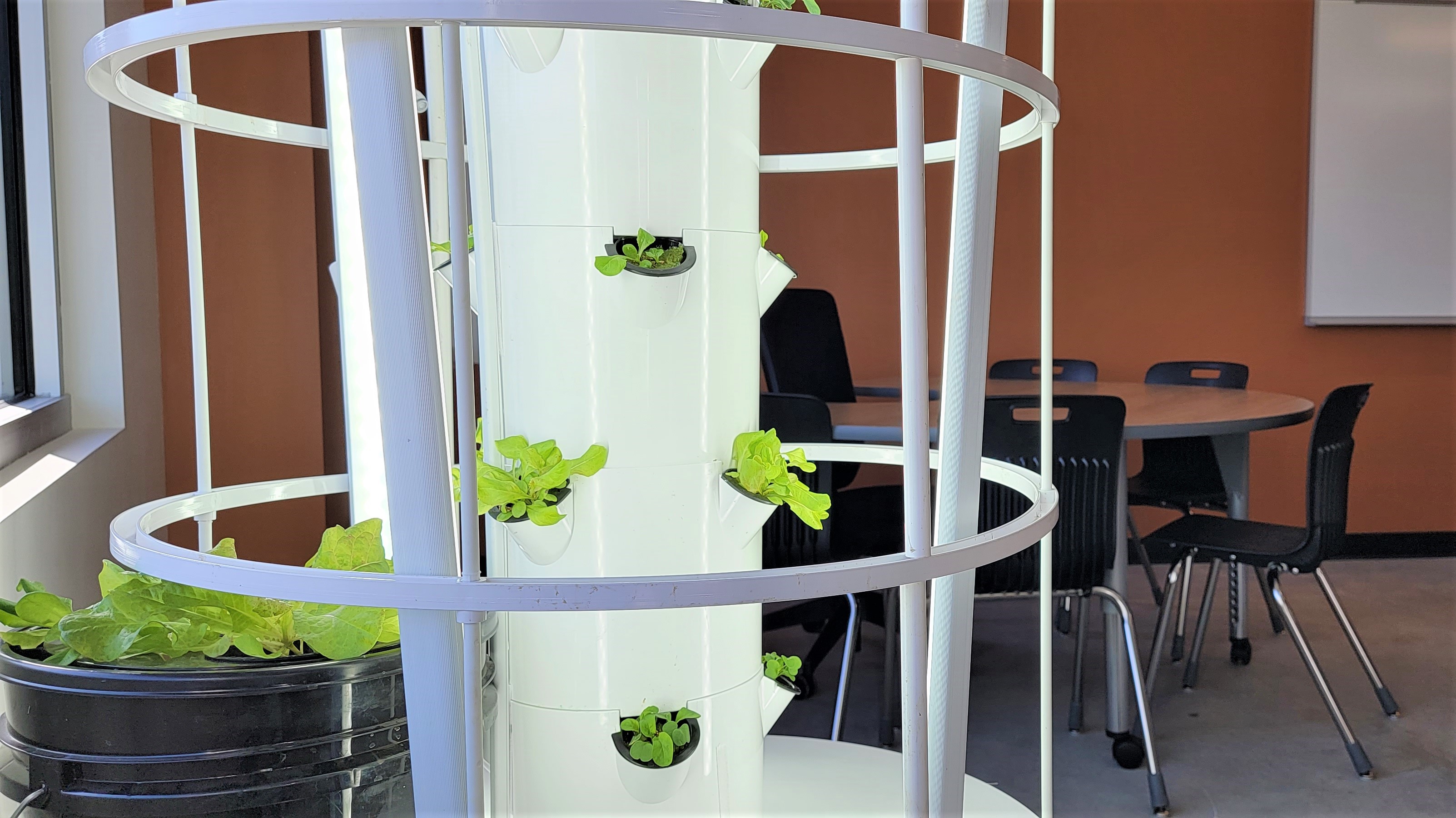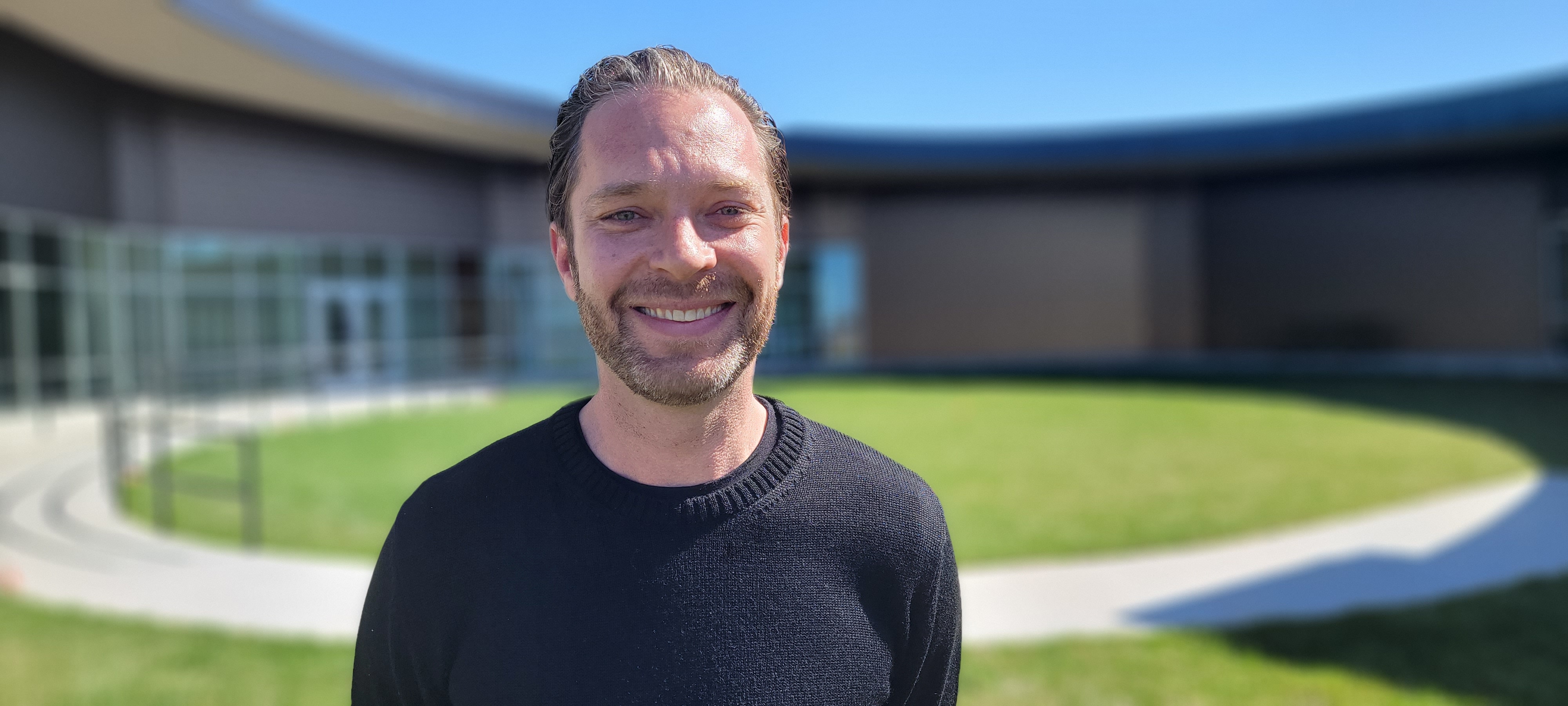On Wednesday, community leaders, Springfield Public Schools officials, Missouri State University leadership and the governor were among the dozens who gathered to celebrate the Darr Family Foundation’s 20th anniversary inside the latest facility that the foundation helped finance and build, the new SPS AgAcademy.
A month from Wednesday, a group of elementary school students who will be part of the choice magnet school’s inaugural class will receive a two-week sneak preview of the inside and, perhaps more importantly, the outside of the AgAcademy that they will attend next August.
Sarah Ward, one of the school’s two fourth-grade teachers, has been envisioning that moment as an opportunity for the teachers and students to set the course for the AgAcademy. She and Kate Marble, her teaching partner, have a plan in place for this. With their future students, they’re going to build and fill raised garden beds.
In total, they’re building six — two short ones, two mediums and two talls. The different sizes serve several purposes, Ward said. The tall ones, for instance, will allow future AgAcademy students with disabilities to get their hands in the dirt while using wheelchairs or other assistance. And the collection of beds will mirror the leveled look of the school, which was designed with intentionality by Bill Darr’s grandson, Tyler Hellweg.

At Wednesday’s event, Ward, Marble and others who led tour groups through the AgAcademy pointed out that, as you traveled from one classroom to the next, the ceilings grow taller. The windows allow in more sunlight. That benefits vegetables and herbs already growing in hydroponic towers installed throughout the classrooms, but it was designed with the growth of students in mind. Hellweg, the principal architect at Arkifex Studios, said that in designing the school, he thought about daylight and about treating a student’s mind as if it were a seed to be nurtured.
After a tour, Ward looked out one of those windows toward a triangular plot of dirt where her future students will spend a good portion of their time in the coming years. A chicken coop will be built there, she said, and she’s been advocating for goats.
“Goats and chickens — totally manageable,” said Ward, a former Watkins Elementary School teacher who grew up on a cattle farm in Salem.
The triangular space is where the raised beds will go, too. To let the first set of AgAcademy kids place their mark upon the school, Ward said she wants to get placards to affix to each of the beds that the school’s future students help build next month.
“They’re laying the foundation for every kid that’s going to come through here, which is a super cool experience for them,” she said. “In 10 years, it’s going to be up and running and fluid. But those kids are going to be the original AgAcademy students who really started this school.”
In preparation for the school’s inaugural year, and because COVID-related issues led to a delay in the school’s opening, Ward and Marble spent the last school year out of the classroom, developing curriculum for the fourth- and fifth-graders who will first fill the AgAcademy. The school will grow to become a home for about 150 fourth- through sixth-graders who are selected via lottery after applying to be part of the latest SPS choice magnet program. The goal is for future groups of incoming fourth-graders to stay at the AgAcademy through sixth grade and to have opportunities to continue to learn Missouri’s mandated public education curriculum through an agricultural lens, said Kelsey Brabo, SPS director of choice programs and student experiences.
“Springfield really has had no rich history of agricultural education,” Brabo said. “Hillcrest (High School) really got the ball rolling with their environmental sciences career pathway, and our first established FFA chapter. What we were able to do now is to start building this vertical alignment from fourth grade all the way up until the senior year of high school.”
Beyond that, she said, students now have an obvious place to look to further their ag education, at MSU. The AgAcademy is located at the university’s Darr Agricultural Center, 2401 S. Kansas Expressway, and college students were coming and going from class just a short walk away from the new SPS school.
“Missouri State has an internationally recognized agricultural department,” she said. “It is robust. It is big. There are so many different pathways that kids can pick from, so why not partner directly with a university that can give them a really quality ag education?”
MSU is part of the public-private partnership that led to the AgAcademy’s development. The $6.7-million school would not exist, Brabo said, if not for the Darr Family Foundation. She recalled the foundation’s executive director, Heather Zoromski, calling her office about three years ago to pitch a “crazy idea” — a farm school. On Wednesday, Zoromski told the audience that there was no better way to celebrate the foundation’s 20th anniversary than to open the school.
Speakers included Gov. Mike Parson, Superintendent Grenita Lathan and MSU President Clif Smart praised Bill and Virginia Darr, who were surrounded by family, including Hellweg, at the school’s opening.

Along with being Bill Darr’s grandson, Hellweg is also a member of the Darr Family Foundation board, and he said the project was a deeply personal one because of his experiences visiting his grandfather’s family farm in Ellington, about 150 miles east of Springfield. The design idea, he said, felt almost subconscious and ready to fall out of his head once he learned about the agriculture school project several years ago.
“To be able to participate in something that reflects his aspirations and reflects some of his ideals, philanthropically and academically, it's put a lot of wind in my sails,” Hellweg said.
Ward and Marble, the fourth-grade teachers, also spoke of the AgAcademy as a motivator.
“Just meeting the Darrs, meeting their family and seeing the mission that they want carried on, I think, really empowered us to create a curriculum that we would mirror their passions and empowerment that they wish to push out in the community,” Ward said.
The teachers plan to do this by encouraging their students to consider the agricultural elements inherent in activities that they do during class. The AgAcademy has a kitchen classroom, where Ward envisions students prepping vegetables harvested from the school’s grow systems on Fridays for an end-of-week salad bar. A small dream of hers is for her students to make little Mason jars of salsa or pasta sauce that she can give to parents after conferences with them.

She said students will see the agricultural components come into focus during those projects. She’s seen that happen for students she taught at Watkins before joining the AgAcademy team. A few years ago, she took several students to an SPS cooking competition. To get ingredients for their recipe, they went to Farmers Park, a place she said her students didn’t know existed.
“They had no idea that you could buy produce from a local farmer,” Ward said. “They had no idea that you could barter, that you could trade goods. Those kids were able to make a quiche, fresh from those farm ingredients. They'd never cooked before. And they felt so empowered. They were excited to take those skills home. They wanted to make their family breakfast. They wanted to share those things. And I think everything that we're going to be doing here, we're going to be very thoughtful in (showing) where does that puzzle piece fall within agricultural spectrums and how can we make it applicable for our students.”
Before applying for the AgAcademy, Marble taught at Sherwood Elementary School. While she doesn’t have Ward’s ag background, she is an outdoors person, and she said she’s seen how a natural environment inspires learning when she taught a summer school course at the Watershed Center.
“Being able to see kids outside interact with nature as opposed to me seeing them outside on a playground at a regular school was really eye opening,” she said.
In May, she plans to take her future students on nature walks from the AgAcademy over to Nathanael Greene/Close Memorial Park. Ward said the students would have needed a bus to get from the school to the park, unless a walking trail was built. The Darr Foundation, she said, made the path for the students.


